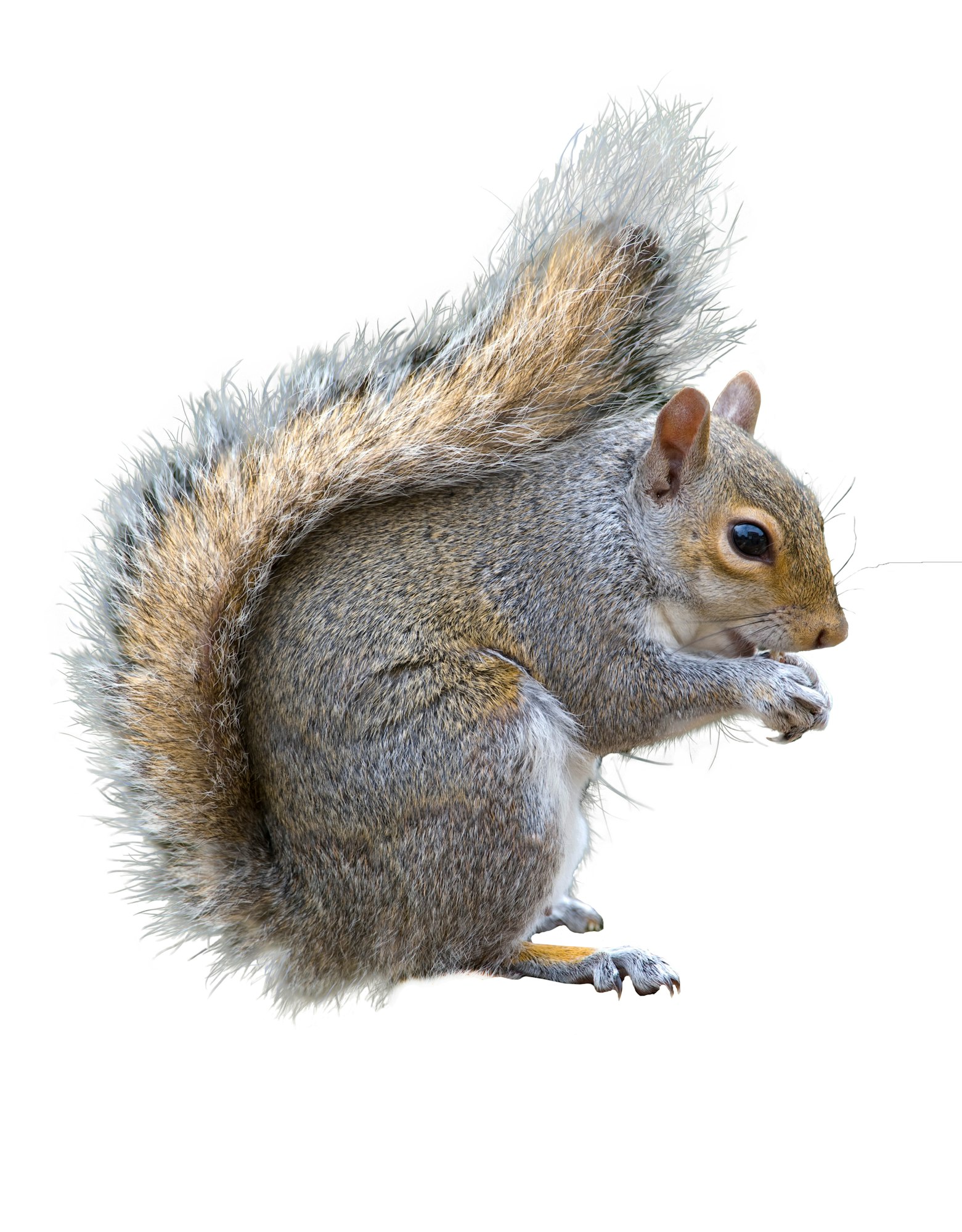Tree Squirrels

There are multiple species of squirrels common throughout San Mateo County, but only the ones that live up in trees are called “tree squirrels” (squirrels that live underground are called ground squirrels).
Two species of tree squirrels, the eastern grey squirrel (Sciurus carolinensis) and the fox squirrel (Sciurus niger) have been introduced to California from the east coast of the United States – most likely on logging trucks. These invasive species are very common in urban and suburban areas with the native western grey squirrel (Sciurus griseus) pushed to more rural areas.
Eastern grey squirrels are grey and brown with a brown/white underbelly. Fox squirrels are more brown/red than grey with a reddish-brown underbelly and tufted ears. Both eastern grey squirrels and fox squirrels may be all black (melanistic). Western grey squirrels are more stocky than either eastern or fox squirrels and are pure grey with a white underside.
All squirrels require places with a lot of trees and prefer trees that have large seeds like oaks. In the wild, squirrels build nests in trees or holes in trees but they may also build nests in attics and chimneys. They feed on nuts, fruits, and buds.
Squirrels produce two litters per year with an average litter size of three pups. Young squirrels are able to reproduce when 10 months old but typically have their first litter at one year old. The maximum life expectancy in the wild is about 6 years, but captive squirrels have lived for 20 years.
Squirrels do not need to be fed by humans to survive. Feeding squirrels by hand can cause them to become bold and aggressive and they may start biting people. Aggressive wild animals are euthanized, so if you care, do not share. Wild squirrels may carry pathogens that cause leptospirosis and salmonellosis. They are also a reservoir for Lyme disease.
Squirrels may also make nests in buildings by enlarging holes or gaps in the roofline by gnawing which can also encourage entry by roof rats. Check your roofline yearly to make sure no holes or gaps have appeared and seal all openings. Install a chimney cap to keep squirrels and other animals out of your chimney. Use a squirrel-proof bird feeder to avoid attracting squirrels to your yard.
Find out more information about tree squirrels and how to manage them from University of California Integrated Pest Management
Find out more information about distinguishing squirrel species from University of California
Page last reviewed: December 28, 2023
